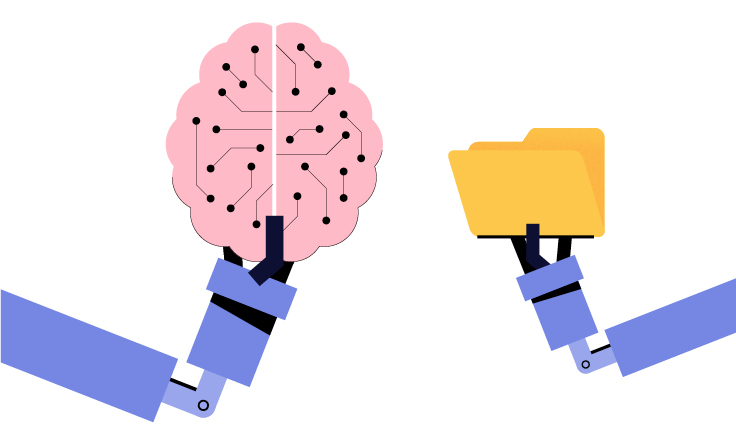How is Artificial Intelligence used in finance?
A key factor to keep in mind is that AI can be used to completely transform how financial institutions, companies, and even consumers access and manage a host of financial-driven activities. AI is also playing a critical role in facilitating and improving credit decisions within the financial sector. AI is enhancing cybersecurity and fraud detection specifically for financial institutions by improving security measures, identifying compromised information, and ensuring compliance with financial regulations. With increasing user acceptance and even regulations becoming more defined, financial institutions such as banks are quickly going to fall behind the curve if a myriad of AI protocols are not soon established. The top applications for AI are:
Artificial intelligence chatbots
Whether financial institutions are looking to improve their customer services or enhance decision-making processes, AI chatbots are taking the spotlight. They are currently the most integrated tools for their ability to utilize natural language processing and curate personalized insights from user data. These are playing a pivotal role in enhancing customer service, from dealing with issues to compiling comprehensive overviews at record speeds to evaluate both an individual's potential and an institution's loan risk appetite. There is also an increasing use of speech-to-text technology in similar areas.

AI fraud prevention software
Fraud prevention software is probably the strongest argument for AI in the industry, as banks and financial services industry are at significant risk of a whole host of security breaches. Digital environments have opened up a whole new world of risk, but AI in fraud prevention is not only able to automatically trigger risk management protocols, but also analyze and single out irregularities in patterns at a speed and accuracy rate that humans simply can't replicate. AI fraud prevention can even help identify key aspects of financial behavior that could indicate bad practices, minimize unwanted scenarios, and create products such as anti money laundering software.
Image recognition
One of the newer applications of AI in finance is image recognition. With the use of images and videos, artificial intelligence is able to take specific information and provide insights from imagery. This can be used to streamline identity document verification, supporting and enhancing KYC protocols while expediting customer onboarding. It can also be used to improve and even speed up responses to insurance claims, as artificial intelligence will be better at spotting visual issues and determining their severity.
Algorithmic trading
Algorithmic trading is a type of trading that uses machine learning algorithms to analyze market data and make trades automatically. This type of trading is becoming increasingly popular in financial markets, as it allows for faster and more accurate trades than human traders. Algorithmic trading uses natural language processing to analyze large amounts of data, including news articles and social media posts, to identify trends and patterns in the market. This enables traders to make more informed decisions and manage risk more effectively. By leveraging AI, traders can react to market changes in real-time, optimizing their strategies and improving their overall performance.
Personalized financial services
Personalized financial services use machine learning algorithms to analyze customer data and provide tailored financial advice and products. This type of service is becoming increasingly popular, as it allows customers to receive financial advice that is tailored to their individual needs and goals. Personalized financial services use predictive analytics to analyze customer data and identify areas where customers may need additional support or guidance. This enables financial institutions to provide more effective and personalized services to their customers. By offering customized solutions, financial firms can enhance customer satisfaction and loyalty, ultimately driving growth and profitability.







